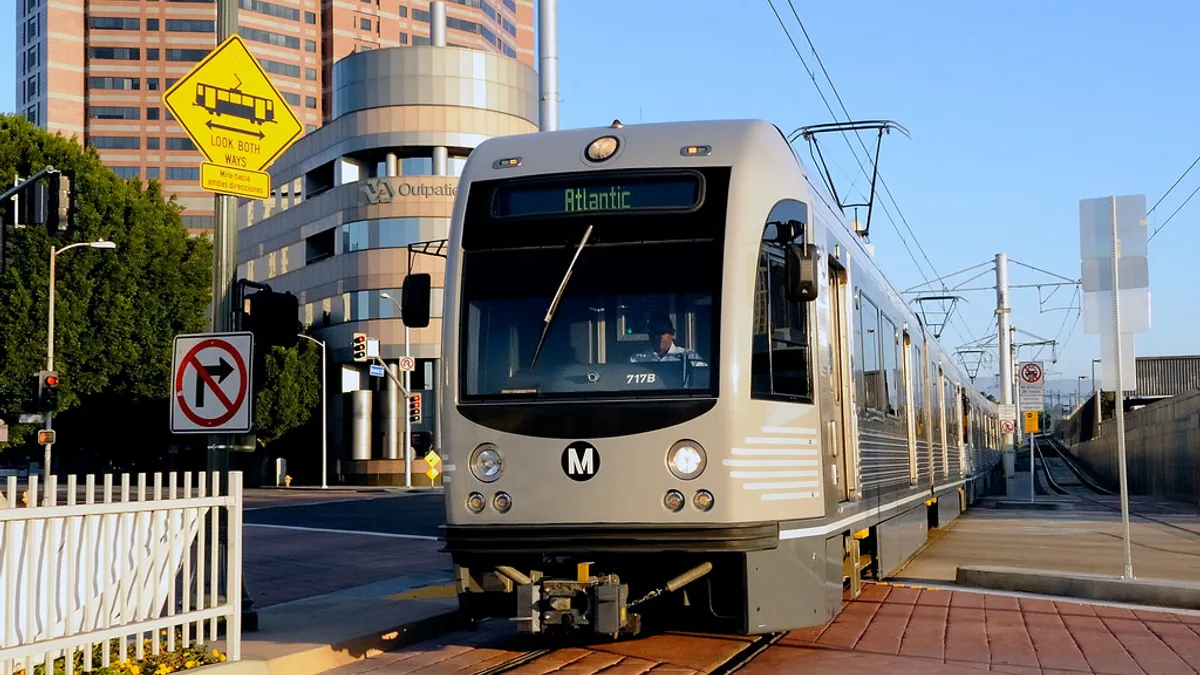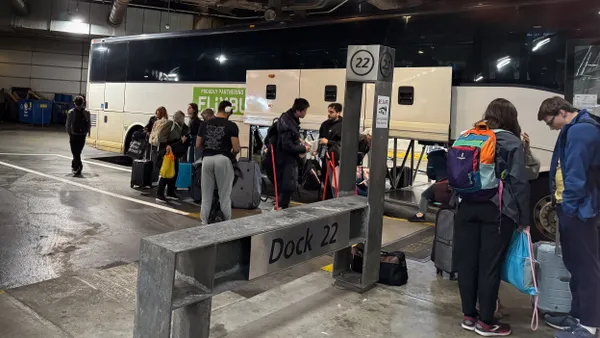Dive Brief:
- A new digital communications and advertising network is going up along a portion of the Los Angeles County Metropolitan Transportation Authority's (Metro) Blue line. The touchscreens are powered by tech company Intersection's IxNConnect platform.
- Passengers will be able to see train and bus arrival times, service alerts and system maps. The screens will also display advertisements that can be targeted to the entire system, a rail line, a station or one screen.
- Nearly 100 touchscreens are scheduled to be installed by October when the "New Blue" rail improvements are expected to be finished. Hundreds of new screens — at least two per station — will be phased in throughout the Metro rail system by 2024.
Dive Insight:
The digital screens will be installed at rail station platforms, mezzanines and plazas. The infrastructure upgrades do not require an investment from Metro or taxpayers because it is paid for with revenue from advertisements displayed on the screens. Intersection says it has committed to investing $20 million in digital equipment on the Metro rail system.
In January 2018, Metro awarded Intersection and Outfront Media 10-year licenses to sell and display ads on the rail and bus system. Intersection is the company behind the Link interactive kiosks popularized in New York City, which now available in other cities including Newark, NJ and Philadelphia.
L.A. Metro has been on a tear with transit system improvements over the past couple years. The pace of upgrades likely will continue as the city makes its way down its "Twenty-eight by '28" list, the 28 transportation projects it aims to complete before the city hosts the 2028 Summer Olympic Games. Projects include major roadway improvements as well as various rail system improvements, new bus rapid transit corridors, microtransit, a riverfront bike path and an airport connector system. Already this year the Los Angeles Department of Transportation (LADOT) made announcements about expanding DASH bus service and introducing LAnow, an on-demand, shared-ride transportation program.
Last year, city and transit leaders touted their progress on improving the system in Metro's State of the Agency report. They introduced a five-point improvement plan that includes implementing mobility innovations and focusing on transportation equity. The renewed attention to transit has begun a transformation on a system that for years was considered underdeveloped.
Los Angeles is known for its crippling traffic and residents' reliance on personal vehicles. One could engage in a "chicken or the egg" argument about the city's car-centric culture and lagging transit system. But the recent investments signal a commitment to getting more people using transit and fewer single-passenger car trips in an effort to reduce the city's infamous traffic congestion and improve its air quality. The city's exploration of congestion pricing is another action to that end.












